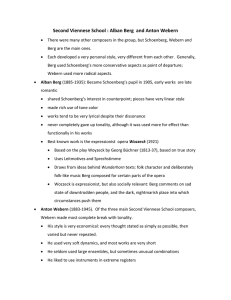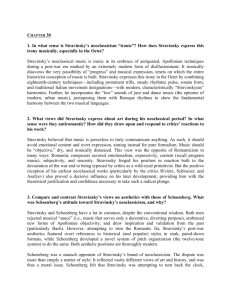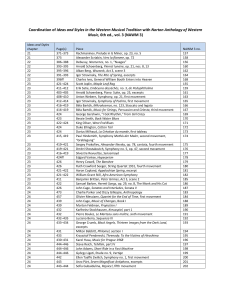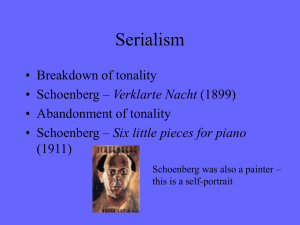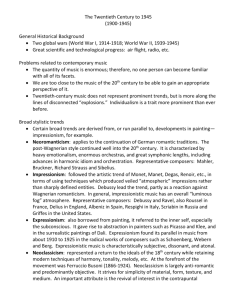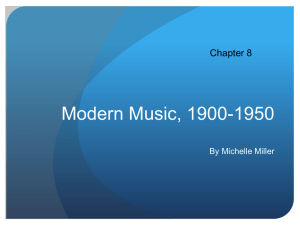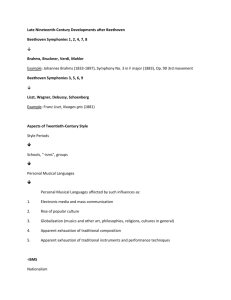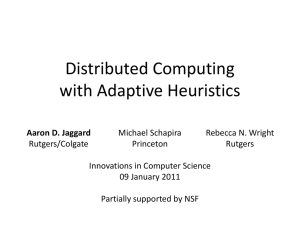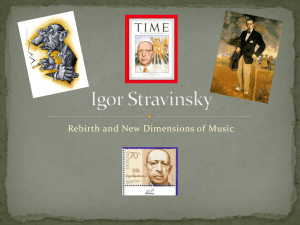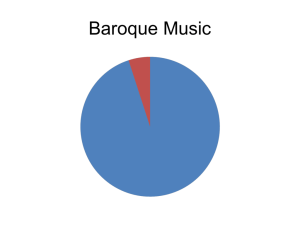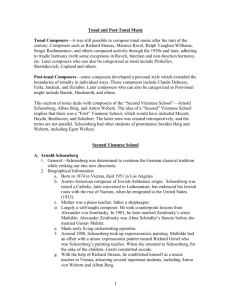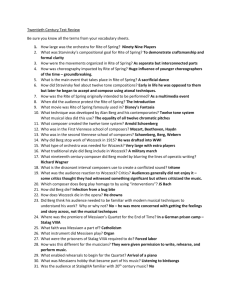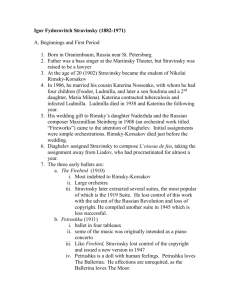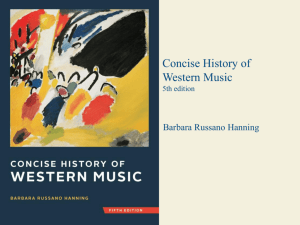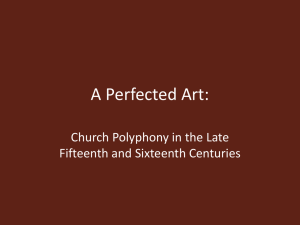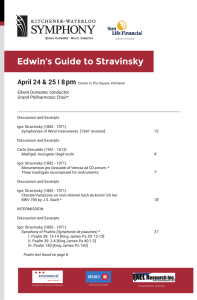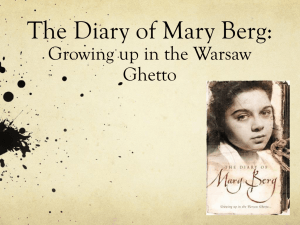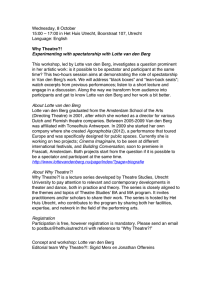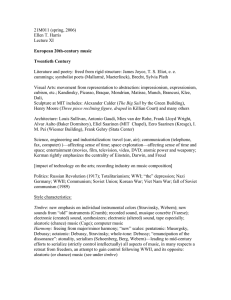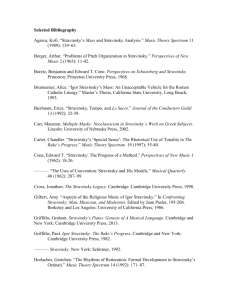Neoclassicism and 12
advertisement
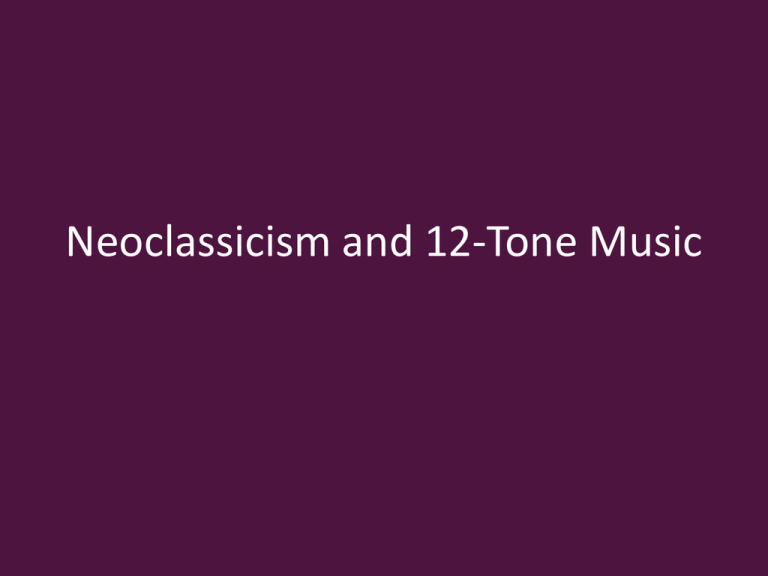
Neoclassicism and 12-Tone Music Neoclassicism • • • • • • Igor Stravinsky, Octet (1923) “Objectivity” Adoption of a preromantic stance Classicism of Haydn and Mozart Influence of Baroque music Influence of jazz and popular music Stravinsky’s Neoclassical Path • Histoire du soldat (1918) – theatrical piece – seven players and narrator – influence of jazz and popular music • Pulcinella (1920) – ballet score – based on eighteenth-century melodies The Music of Stravinsky’s Octet • [Anthology 3-24] – 1. Sinfonia • sonata form • octatonic melodies – 2. Tema con variazioni – 3. Finale • walking bass • contrapuntal • reference to Bach Some Ideas About the Octet • “Some Ideas about My Octuor” – “My Octuor is not an ‘emotive’ work” – “I admit the commercial exploitation of a musical composition” – “This sort of music has no other aim than to be sufficient in itself” Stravinsky and Neoclassicism • • • • • Symphony of Psalms (1930) Symphony in C (1938–40) Symphony in Three Movements (1945) Violin Concerto (1931) The Rake’s Progress (1951) The Ivory Tower • Society for Private Musical Performance – 117 concerts between 1918 and 1921 – compositions by German modernists and works by Debussy, Bartók, Stravinsky, and others In Search of Utopia: Schoenberg and Twelve-Tone Technique • “Aggregate compositions” • Theories of Josef Mattias Hauer (1883–1959) – Nomos • Means by which they could create extended instrumental works Giving Music New Rules • Tonreihe “tone row” – ordering of all 12 pitches from which motivic and harmonic content will be derived – row may be transposed, in inversion, retrograde, or retrograde inversion – rows subdivided into segments • Serialism • “Twelve-tone technique”; “dodecaphony” Giving Music New Rules • Suite for Piano, Op. 25 [Anthology 3-25] – Präludium – Gavotte and Musette – Intermezzo – Menuett – Gigue Back Again to Bach • • • • BACH (B♭ACB) inserted into Op. 25 tone row Schoenberg, “National Music” (1931) Contrapuntal art Variations for Orchestra (1931) – BACH allusions Berg’s Twelve-Tone Romanticism • • • • Alban Berg (1885–1935) Studies with Schoenberg Influence of Mahler Wozzeck (1922) Berg’s Twelve-Tone Romanticism • Chamber Concerto for violin, piano, and a wind ensemble of thirteen instruments (1925) – ArnolD SCHönBErG = A – D – E♭- C – B – B♭ – E – G – Anton wEBErn = A – E – B♭ – E – AlBAn BErG = A – B♭ – A – B♭ – E – G Berg’s Twelve-Tone Romanticism • Lyric Suite for string quartet (1926) [Anthology 326] – symmetrical “all-interval” row – Hanna Fuchs-Robettin/ Alban Berg (HF/AB = BF/AB♭) – numerous extramusical references Epitome: Anton Webern • Anton Webern (1883–1945) • Symphony, Op. 21 (1928) [Anthology 3-27] – A-F#-G-A♭-E-F B-B♭-D-C#-C-E♭ • intervallic palindrome

